Persian rugs cleaning
Persian Rug Cleaning, deep cleaning of Persian rugs, foam cleaning of Persian rugs, dry cleaning of Persian rugs, antibacterial cleaning of Persian rugs, disinfection of Persian rugs, impregnation of Persian rugs is carried out in top quality according to our internal company standards, IICRC™ guidelines and standards and the professionally implemented PERSIAN® system.
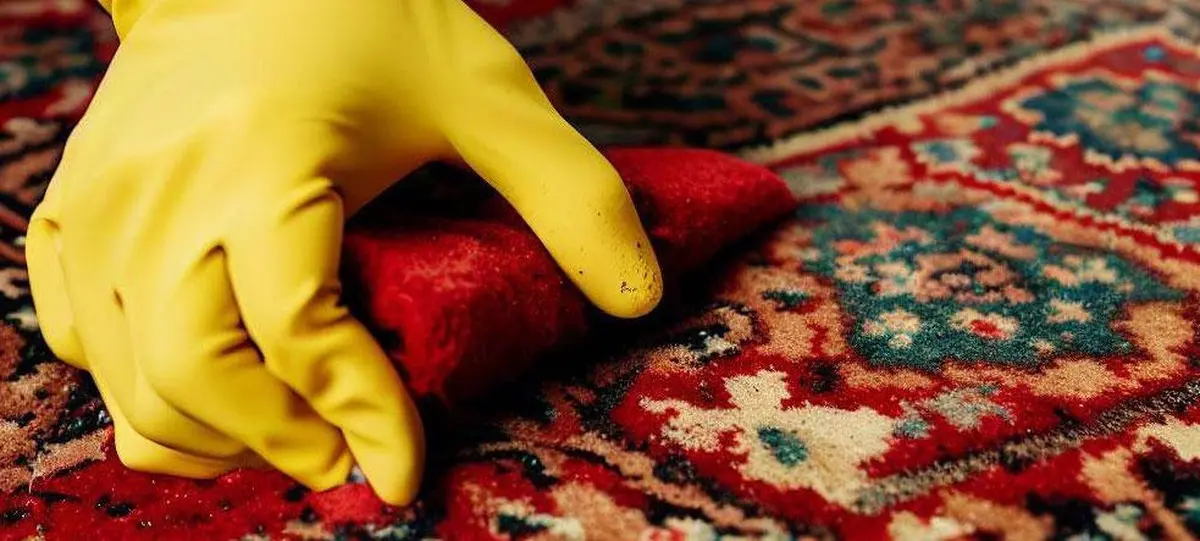
The 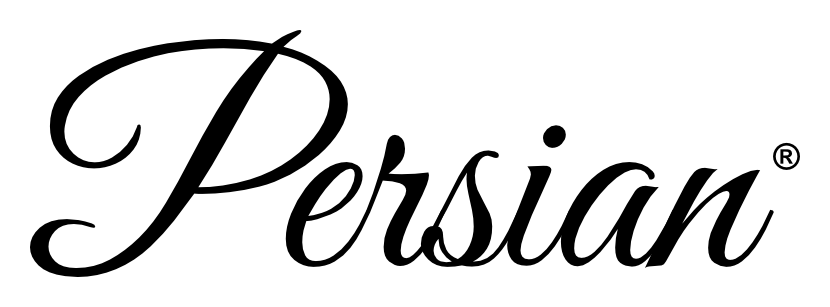 trade mark PERSIAN® defines the Rug Service® branded technology concept of expertly executed Rug Service® focused on the regular maintenance, cleaning, revitalization and impregnation of synthetic, Persian rugs, fabric and leather sofas, chairs and upholstery materials. This branded concept brings the utmost professionalism in full synergy with maintaining ethical, environmental and quality performance standards including contractual guarantee of the services provided by the contractor.
trade mark PERSIAN® defines the Rug Service® branded technology concept of expertly executed Rug Service® focused on the regular maintenance, cleaning, revitalization and impregnation of synthetic, Persian rugs, fabric and leather sofas, chairs and upholstery materials. This branded concept brings the utmost professionalism in full synergy with maintaining ethical, environmental and quality performance standards including contractual guarantee of the services provided by the contractor.
Paper rug cleaning delivers the perfect solution for the longevity and beauty of your rugs. Rugs are an important element of any interior. They bring warmth, style and comfort to a space. However, their maintenance can be challenging and even regular vacuuming is often not enough to keep rugs in perfect condition. Over time, dust, allergens, dirt and various stains settle into the fibres of rugs. The solution is to use professional services that offer Persian rug cleaning.
Persian rugs – the history and science of rugs
Persian rugs are the most famous hand-knotted oriental rugs alongside Turkish and Afghan rugs. Persian rugs are commonly referred to as rugs from modern-day Iran, which feature floral patterns and vibrant colors. Strictly speaking, the nomadic hand-knotted rugs of Iran do not count as classic Persian rugs because they are usually knotted in darker colors and geometric patterns. The Persian rug is – as already mentioned – characterised by its floral patterns. The great variety of Persian rugs is named after their provenance, cities and villages.
Persian rugs are associated with Iran, which is a multi-ethnic country and combines many cultures. Azerbaijan is considered one of the cradles of the Iranian rug industry. Documents prove that Persian rugs and kilims are at least 1200 years old. During the reign of the Seljuks, the knotting craft became famous in Persia. Traditional Persian rugs reached their heyday under the Safavids, who particularly encouraged the art form. Until the 15th century, almost exclusively geometric motifs were used. After that, plants and sweeping arabesques became increasingly common. They were inspired by the then widespread art form of miniature painting. Since then, the artistic design of a rug has been clearly separated from the actual execution of the knotwork. Talented draughtsmen created the knot patterns of Persian rugs on cardboard or paper, which became the basis for the weave. The Persian rugs we know today mostly date from the Shah’s period. During the reign of the Shah of Persia, the Persian rug gained great importance as an export item and today it is intrinsically linked to Persian tradition.

The most famous origins of Persian rugs
- Tabriz rugs – have been woven in the city on the former Silk Road since the 16th century
- Nainan Rugs – Particularly bright and beautiful Persian rugs made of silk.
- Sarough Rugs – Large and old rugs also known as American Sarough.
- Bijar Rugs – Extremely rugged and strong rug that often lasts for decades.
- Isfahan Rugs – The finest, most colorful and beautiful knotted rugs in the world.
- Keshan Rugs – Large ornaments in red and blue with good value for money.
- Hamedan Rugs – Hamedan rugs are Persian nomadic rugs from the Hamedan province.
Vegetable dyes as a long-term promise of quality
Rugs dyed with vegetable dyes often only acquire their true beauty over time, as the dyes become more uniform and harmonious over time. Old and antique Persian rugs are therefore particularly sought after by collectors and enthusiasts and can therefore achieve a higher value than new Persian rugs. For example, a Kirman rug sold for an incredible seven million euros at a London auction in 2010 and has since been considered the most expensive Persian rug in the world. Shortly before that, this rug was unknowingly listed for 900 euros.
Characteristics of a traditional Persian rug
It is not easy for a layman to distinguish an original Persian rug from a hand-knotted rug from, for example, India or Pakistan, because recognising the most important distinguishing features requires a great deal of experience. Indian rugs often look very accomplished and customised, whereas a Persian rug has a natural authority that gives a sense of uniqueness and value. Unfortunately, objective distinguishing features can usually only be recognised by experts. Therefore, it is advisable to seek expert advice in case of questions concerning the origin. Our information on the origin of rugs can be found on our detailed website. Of course, we can also issue certificates of authenticity on request.
Why and how to clean Persian rugs?
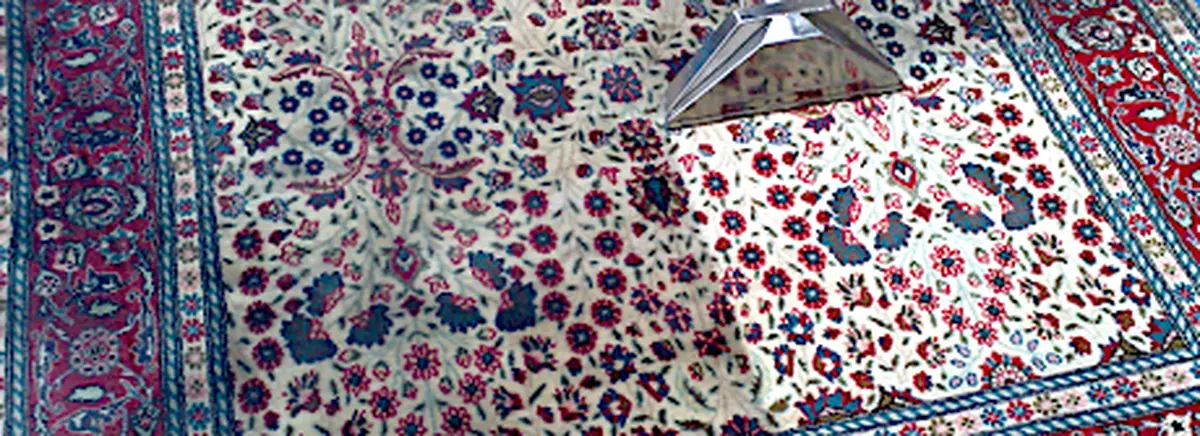 We know why it is important to have your Persian rugs professionally cleaned by a rug cleaning company. Normal home rug care mainly involves vacuuming and occasional hand cleaning. However, these methods are not enough to thoroughly remove all the dirt and allergens that settle deep in the rug fibers. A professional Persian rug cleaning company can clean your rugs so that they look as good as new, while extending their life and performing a deep disinfection with UV irradiation and the “BIO-OZON” ozone vacuum machine, all without the need for chemicals.
We know why it is important to have your Persian rugs professionally cleaned by a rug cleaning company. Normal home rug care mainly involves vacuuming and occasional hand cleaning. However, these methods are not enough to thoroughly remove all the dirt and allergens that settle deep in the rug fibers. A professional Persian rug cleaning company can clean your rugs so that they look as good as new, while extending their life and performing a deep disinfection with UV irradiation and the “BIO-OZON” ozone vacuum machine, all without the need for chemicals.
Deep removal of dirt and allergens by UV radiation and ozonation
Dust, dust mites and other allergens can hide deep in the rug and cause health problems, especially allergies and asthma. Conventional vacuuming only removes surface dirt but does not reach deep into the fibres. Persian rug cleaning uses special technologies that penetrate deep into the rug and remove even the smallest particles of dust, dirt and allergens. This improves the air quality in your home.
Removing stubborn stains and unpleasant odours with ozone
Rugs can easily suck up liquids and odors that build up over time and cause unpleasant smells. Professional cleaners use strong but gentle cleaning agents that will remove even stubborn stains from wine, coffee or pets without damaging the material. Stains that you don’t remove at home can penetrate deeper into the fibers over time, which can cause permanent damage to the rug.
Extend the life of your rug with impregnation and lanolin
Persian rugs are often an expensive investment, whether it’s a hand-woven piece rug or a modern designer piece. Regular professional cleaning extends the life of a rug by preventing the build-up of dirt that can damage its fibres. A Persian rug cleaning company will take care of your rug with care to make it last as long as possible.
Persian rug cleaner and technical information
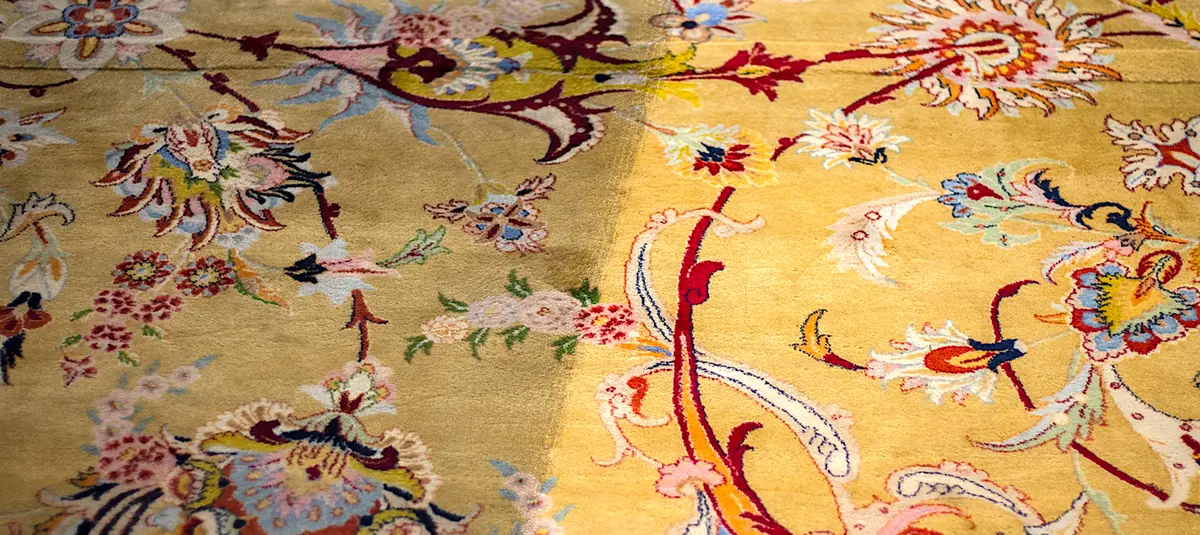 Persian rugs are made from different types of fibers that have specific properties and require different cleaning methods. Our Persian rug cleaning company is experienced in cleaning all common types of Persian rugs.
Persian rugs are made from different types of fibers that have specific properties and require different cleaning methods. Our Persian rug cleaning company is experienced in cleaning all common types of Persian rugs.
Overview of Persian rug cleaning services
Before starting the cleaning procedure, rug repair or restoration of rugs and fringes is provided if necessary. If your rug has suffered damage, for example due to wear, tear or loss of colour, Persian rug cleaning can offer repair and restoration services. Experienced professionals can repair damaged fibers, re-dye faded areas, or restore the rug’s texture. These services are especially valuable for expensive or antique rugs that have a high value.
Phase 1 > mechanical brushing and knocking with the KIRBY® & HYLA® machine system. Tapping with a fine rotary brush loosens coarse mechanical dirt trampled deep into the rug fibre. The rug is ready for the next knocking process with the electric knocker, which aims to open and fluff the rug fibre. The whole process serves to loosen dust, hair, dried mud and dirt in the warp.
Phase 2 > chemical gentle cleaning – enzymatic/foam pre-spraying releases water soluble or dry foam soils. Enzymes will also remove contaminants that subsequent steps may not always release including removing grease and grime and releasing encapsulated odors.
Phase 3 > manual or machine cleaning combined with bath and soak of the rug. This is always determined by the type of rug and the soiling of the rug, so as to avoid deterioration and achieve the maximum possible cleaning result. Persian rug cleaning offers a special cleaning method that will revive the colors and bring back your rug to its original beauty. This service is ideal for rugs that are located in areas with direct sunlight or are exposed to frequent use.
Phase 4 > for Persian rugs, a nourishing application of natural lanolin is used to restore the natural properties of the fiber and fabric. Lanolin regeneration brings revitalization to the fibers and also brings protection to the rug from adverse external influences. The rug will show no signs of fraying, will not break, will gain a brighter colour and will feel soft and nourished to the touch.
Phase 5 > of rug drying is quite crucial. Although the final disinfection and antibacterial treatment with ozone (O₃) is the most effective possible, as (O₃) is a powerful oxidant that effectively kills bacteria, viruses, moulds and odours and is therefore used by our company for the final disinfection of surfaces and textiles, thorough drying is important. This is because moisture can affect the effectiveness of the final antibacterial treatment and the disinfecting efficacy of both chemical and ozonation.
Residual moisture can still linger in materials after chemical or ozone disinfection, which continues to promote mold growth and possible bacterial proliferation. Therefore, at our dry cleaners, we consider it important to thoroughly re-dry materials after ozonation or chemical disinfection to prevent the re-growth of microorganisms.
 Drying your rugs and getting them thoroughly dry is the absolute key in terms of expertly executed Persian rug maintenance. Our company uses a technological system of accumulated / radiant heat with the AeroFlow® system from Thermotec AG. Contact drying with uniform drying of rugs relies on AeroFlow® technology, which efficiently transfers heat to the fabric and fibres via integrated fireclay heating plates that distribute the accumulated heat deep into the surface of the material for the required time via the built-in thermostat with FlexiSmart temperature and humidity sensor.
Drying your rugs and getting them thoroughly dry is the absolute key in terms of expertly executed Persian rug maintenance. Our company uses a technological system of accumulated / radiant heat with the AeroFlow® system from Thermotec AG. Contact drying with uniform drying of rugs relies on AeroFlow® technology, which efficiently transfers heat to the fabric and fibres via integrated fireclay heating plates that distribute the accumulated heat deep into the surface of the material for the required time via the built-in thermostat with FlexiSmart temperature and humidity sensor.
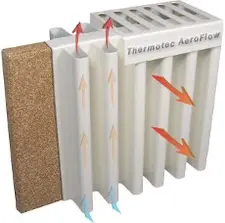 Drying rugs with the AeroFlow® system is therefore based on the proportional flow and radiation of heat to ensure fast and even drying of the rug. Thanks to the lower airflow velocity and low surface temperature of the heating plate, dust is not blown away and the rugs dry evenly. The independent VDE institute has verified that only quality materials meeting the certification criteria are used for the product “Thermotec storage heaters” and awards the products the VDE GS label.
Drying rugs with the AeroFlow® system is therefore based on the proportional flow and radiation of heat to ensure fast and even drying of the rug. Thanks to the lower airflow velocity and low surface temperature of the heating plate, dust is not blown away and the rugs dry evenly. The independent VDE institute has verified that only quality materials meeting the certification criteria are used for the product “Thermotec storage heaters” and awards the products the VDE GS label.
Phase 6 > disinfection and odour removal, as rugs can absorb odours over time, especially when exposed to moisture, pets or spilled liquids. Professional cleaners offer disinfection and odor neutralization services that will remove even the most stubborn odors and leave your rug fresh and smelling good. The antibacterial treatment is done by deep disinfection with UV irradiation and ozone vacuum machine “BIO-OZON”, all without the need for chemicals with the highest possible efficiency in terms of removing mites, viruses, bacteria, odors and mold.
Phase 7 > application of protective impregnation including deodorization of the fibre after disinfection with ozone and UV. After cleaning – drying – disinfection, application of a special protective agent that repels dirt and stains from the British company PROCHEM® is recommended. These agents form an invisible protective layer that prevents liquids from penetrating the rug fibres. This will make your rug better able to resist soiling and easier to maintain.
How often should you use the services of a Persian rug cleaning?
The frequency of professional rug cleaning depends on several factors, including the type of rug, its level of use, and its location. In general, it is recommended to have your rugs professionally cleaned at least once a year. In homes with high dust levels, pets or young children, it is advisable to clean rugs more frequently, for example every 6 months.
Rug cleaning in households with allergies
If someone in your household suffers from allergies, it may be advisable to have the rugs cleaned even more frequently to minimise the presence of allergens such as dust, pollen and dust mites. Regular professional cleaning can go a long way in improving air quality and alleviating allergies.
Households with pets
Pets can leave hair, dirt and unpleasant odors on rugs. Persian Rug Cleaners offers special services for households with pets that include removing pet hair, stains and odors associated with pets. It is recommended to have your rugs cleaned at least twice a year if you have a dog, cat or other pets in your home.
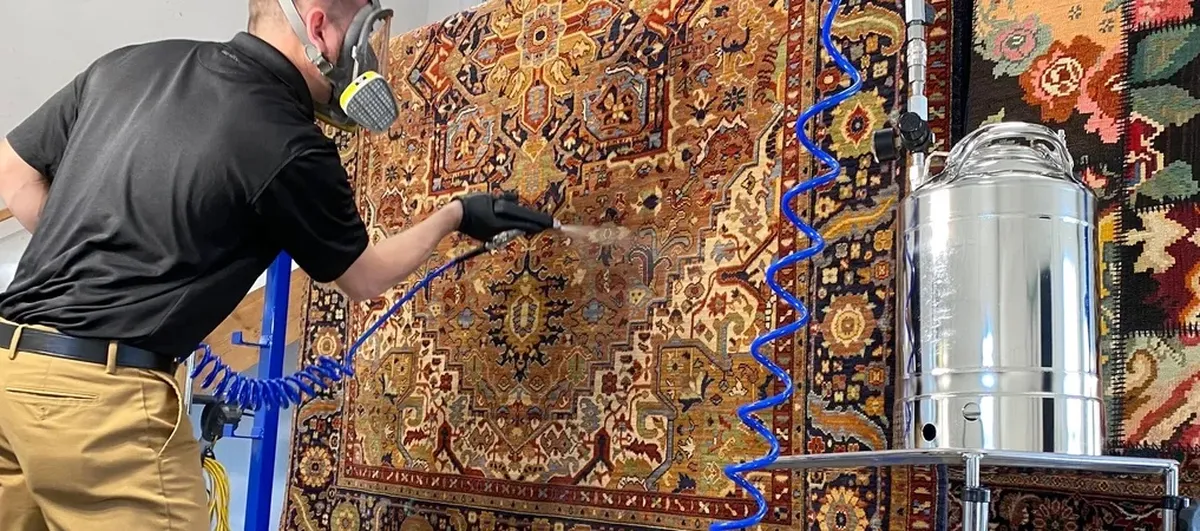
Why choose a Persian rug cleaning?
Investing in professional rug care is an investment in the long-term quality and hygiene of your home. Persian rug cleaning offers a wide range of services that not only ensure a perfect clean, but also prolong the life of your rugs and improve the quality of life in your home.
It doesn’t matter whether you have a luxury Persian rug, a modern Persian rug or a delicate piece in your home, Persian rug cleaning will tailor its methods to the specific needs of your rug and ensure that it is always in perfect condition. With professional comprehensive rug maintenance, you can be sure that your rug will not only be clean, but also safe for your family’s health.